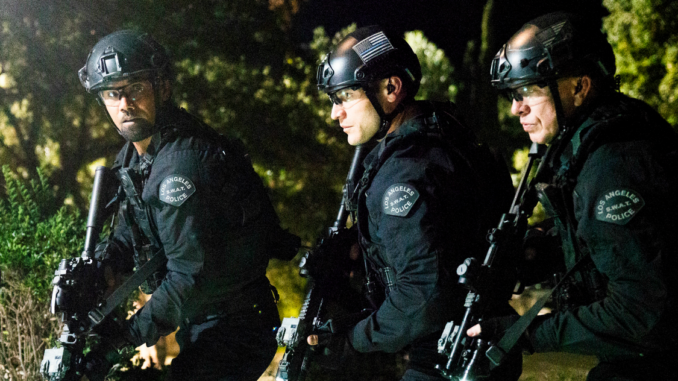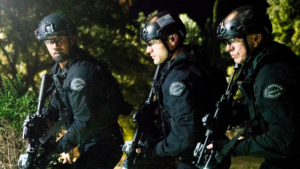
Introduction: The Rise and Fall of S.W.A.T. on CBS
S.W.A.T., the high-octane police procedural that aired on CBS for eight seasons, recently became the subject of much speculation and fan disappointment. Fans who once loved the action-packed storylines and gripping drama were shocked when the news broke: S.W.A.T. was canceled. But why did the show, which had enjoyed a strong following, come to an end? In this article, we explore the ups and downs of S.W.A.T., diving into the reasons behind its cancellation and the legacy it leaves behind.
H1: The Rise of S.W.A.T.: A Show That Captured the Audience
H2: How S.W.A.T. Became a Hit
S.W.A.T. premiered on CBS in November 2017, taking inspiration from the 1975 TV series and the 2003 film of the same name. The show, centered around an elite team of SWAT officers led by Sergeant Hondo Harrelson (played by Shemar Moore), quickly gained popularity for its intense action sequences, diverse cast, and deep exploration of complex social issues.
The series was praised for its engaging character development, especially Hondo’s leadership journey and the personal challenges faced by the team members. With strong performances from Shemar Moore and his castmates, S.W.A.T. quickly became a fan favorite, drawing in viewers who enjoyed a blend of thrilling action and thought-provoking storytelling.
H3: A Fan-Favorite Cast and Characters
At the heart of the show’s success was its ensemble cast, with Shemar Moore in the starring role. Moore’s portrayal of Hondo Harrelson resonated with viewers, as he brought depth and emotion to the character. Alongside Moore, other key players like Lina Esco as Chris Alonso, Alex Russell as Jim Street, and Jay Harrington as David “Deacon” Kay helped create an emotionally engaging and action-packed show. Fans quickly grew attached to the team, and the bonds they shared on-screen became an integral part of the show’s charm.
H1: S.W.A.T.’s Struggles: The Show’s Roller Coaster Journey
H2: Early Success, But Trouble Behind the Scenes
Despite its strong start, S.W.A.T. wasn’t immune to the pressures of the television industry. Like many long-running shows, it faced challenges such as maintaining audience engagement, dealing with internal production issues, and balancing the budgets required to produce high-quality action scenes.
While the show consistently delivered intense drama and action, there were signs of behind-the-scenes turbulence. The shift in audience tastes and the challenge of keeping a long-running series fresh contributed to the series’ eventual decline in ratings. Although S.W.A.T. remained a solid performer for CBS, its long-term sustainability came into question.
H3: Budget Constraints and Production Costs
Another key factor in S.W.A.T.’s eventual cancellation was the rising production costs associated with creating its high-energy action sequences. These costly stunts and effects took a significant toll on the budget, especially as the show’s ratings began to stabilize rather than climb. As a result, CBS had to weigh the financial viability of continuing to invest in the series.
H1: S.W.A.T.’s Cancellation: What Led to the End?
H2: The Final Decision
In 2024, after eight seasons and a loyal fan following, CBS made the difficult decision to cancel S.W.A.T.. The show had been renewed for its eighth and final season, which would wrap up the ongoing storylines. While the show had performed well in terms of viewership, ratings alone weren’t enough to secure a renewal for another season.
Several factors contributed to the cancellation, with the most significant being budget issues, the network’s desire for fresh programming, and the natural decline that often occurs with long-running series. Television networks face constant pressure to keep content new and exciting, and S.W.A.T.’s cancellation is a reminder of the difficult decisions that often come with managing a network’s lineup.
H3: The Role of Viewer Ratings and Market Trends
As the media landscape evolves, so do viewer preferences. In the case of S.W.A.T., ratings began to plateau in later seasons, a trend that influenced CBS’s decision-making. While still attracting a dedicated fanbase, S.W.A.T.’s audience was shrinking, particularly in comparison to newer shows that had fresh concepts and ideas. The changing tastes of viewers meant that CBS had to consider cutting the show to make room for something new.

H1: What Does the Future Hold for S.W.A.T. Cast and Crew?
H2: What’s Next for Shemar Moore and the Cast?
With the cancellation of S.W.A.T., the cast members are now looking toward their next steps. Shemar Moore, who became a household name for his role as Hondo, is expected to pursue new opportunities in both television and film. Moore’s talent and popularity make him one of the most likely candidates for a leading role in a new project.
Other cast members, including Lina Esco, Alex Russell, and Jay Harrington, will likely continue their acting careers. Their experiences on S.W.A.T. have undoubtedly sharpened their skills, and many fans hope to see them in new roles soon.
H3: Will S.W.A.T. Have a Spin-Off?
While there’s no official word on a S.W.A.T. spin-off, the idea has been floated by fans who want to see more of the S.W.A.T. universe. Given the show’s success and the strong characters, a spin-off or continuation of the franchise could be a possibility. However, for now, CBS has not announced any plans for a spin-off series.
H1: The Legacy of S.W.A.T.: What Will Fans Remember?
H2: A Show That Tackled Important Issues
One of the defining features of S.W.A.T. was its ability to address important social and cultural issues while still delivering thrilling action. The series didn’t shy away from depicting the complexities of law enforcement, particularly in a changing world. It explored themes such as police reform, loyalty, and the challenges faced by those who serve on the front lines of law enforcement.
The emotional depth of the characters and the personal challenges they faced resonated with many viewers. Fans will likely remember S.W.A.T. for its unique combination of action, heart, and social relevance.
H3: The Bond Between the Team
At the core of S.W.A.T. was the strong bond between the team members. Viewers watched as Hondo and his team navigated the dangers of their work while forming deep friendships that went beyond the call of duty. It was this camaraderie and emotional investment in the characters that made the show so beloved.
Conclusion: S.W.A.T.’s Lasting Impact
S.W.A.T. may have been canceled, but its impact will be felt for years to come. The show’s blend of action, drama, and social commentary captured the attention of millions, and its characters became ingrained in the pop culture landscape. While the show’s end may have come too soon for some, it leaves behind a legacy of memorable moments, thrilling missions, and a loyal fanbase.
In the end, S.W.A.T. will always be remembered as a series that brought both heart-pounding action and genuine emotion to the small screen.
FAQs
1. Why was S.W.A.T. canceled? S.W.A.T. was canceled due to factors such as rising production costs, declining ratings in later seasons, and CBS’s desire to introduce new programming.
2. How many seasons did S.W.A.T. have? S.W.A.T. had a total of eight seasons before being canceled.
3. Will there be a S.W.A.T. spin-off? While there has been no official confirmation, fans have speculated about the possibility of a spin-off due to the success of the show.
4. What’s next for Shemar Moore after S.W.A.T.? Shemar Moore is expected to pursue new acting roles in both television and film following the end of S.W.A.T..
5. What makes S.W.A.T. so memorable? S.W.A.T. is memorable for its action-packed sequences, its portrayal of complex social issues, and the strong bond between its characters.
